Y5 Super Settings
£3.00
KS2 National Curriculum:
✓ Comparing fantasy, sci-fi, pirate, and traditional settings
✓ Spotting patterns in descriptive language and story type
✓ Explaining how settings influence tone and events
✓ Writing comparative statements and reflections
This lesson explores why different types of stories have different settings and it compares real and imaginary settings. Activities include answering higher and lower order questions.
There is a five-minute evidence-based CPD activity at the end of this lesson which will develop classroom teachers’ skill set. This CPD consists of a research extract on peer teaching with a five-minute activity based on this extract.
Description
Recommended Year Group: Year 5
Focus: Comparing settings across multiple genres
Skills Developed:
• Comparing fantasy, sci-fi, pirate, and traditional settings
• Spotting patterns in descriptive language and story type
• Explaining how settings influence tone and events
• Writing comparative statements and reflections
📘 National Curriculum Links:
• Reading – Comprehension: Compare texts and genres
• Writing – Composition: Justify genre selection using setting
• Spoken Language: Explain genre features aloud
• Thinking and Learning: Evaluation, peer learning
These evidence-based learning (EBL) lessons are based on classroom practice that has been proven, by research, to maximise thinking, learning and attainment. From an extensive review of educational research, we identified the eight key classroom thinking and learning skills that were common across these research papers. We named these eight key skills “EBL skills”.
EBL skills have been proven by research to maximise learning because they combine the most productive thinking skills with the most effective learning behaviours. Each of our evidence-based learning lessons uses the English curriculum as a framework through which the eight EBL skills are delivered.
Teachers also have the opportunity to add to their own skill set or refresh their existing skills with our five-minute CPD activity, based on one of the EBL skills used in this lesson.
The skills in bold below are the EBL skills developed in this Familiar Settings lesson. Click on each skill to learn more about that skill.
- Collaboration
- Thinking Skills
- Peer Assessment
- Peer Teaching
- Self-Assessment
- Metacognition
- Self-Regulation
- Independent Learning
1 review for Y5 Super Settings
Only logged in customers who have purchased this product may leave a review.
Related products
-


Y6 Writing a Mystery Story
£3.00 Add to basket £3.00Add to basket
£3.00Add to basketKS2 National Curriculum:
✓ Planning and writing a full mystery story
✓ Using suspense techniques and plot structure
✓ Paragraphing, dialogue, and character development
✓ Reviewing and improving narrative with peer feedbackThis lesson focuses on a creative writing task – writing an account of being in a deserted house, late at night, for a mystery story. This creative writing task is scaffolded – it provides the tools for pupils to improve their creative writing by using both action and linking verbs, powerful verbs, ellipses and dashes, as well as varying sentence length for effect.
There is a five-minute evidence-based CPD activity at the end of this lesson which will develop classroom teachers’ skill set. This CPD consists of a research extract on self-assessment with a five-minute activity based on this extract.
VIEW -
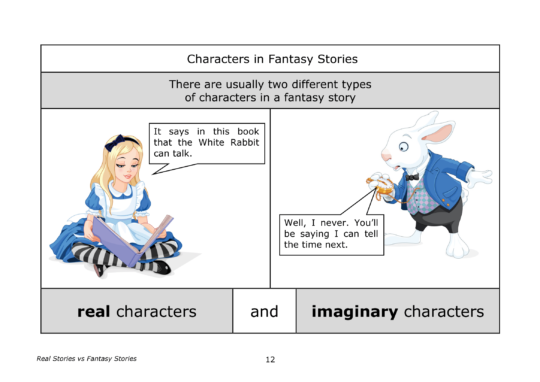

Y5 Real Stories vs Fantasy Stories
£3.00 Add to basket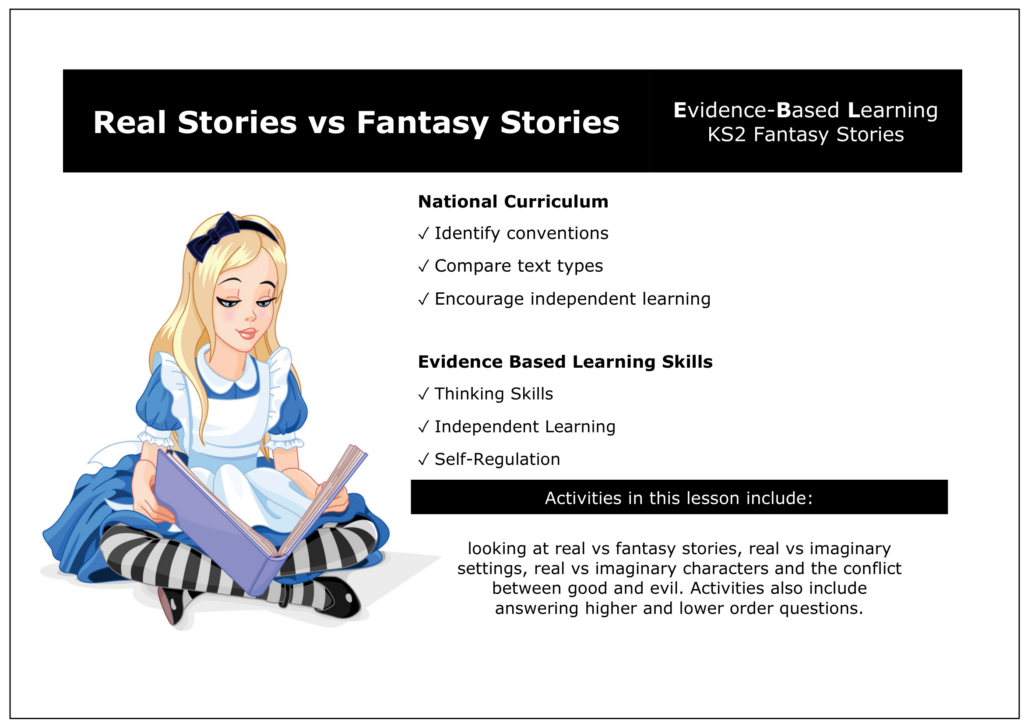 £3.00Add to basket
£3.00Add to basketKS2 National Curriculum:
✓ Identify conventions
✓ Compare text types
✓ Encourage independent learningActivities in this lesson include looking at real vs fantasy stories, real vs imaginary settings, real vs imaginary characters and the conflict between good and evil. Activities include answering higher and lower order questions.
There is a five-minute evidence-based CPD activity at the end of this lesson which will develop classroom teachers’ skill set. This CPD consists of a research extract on thinking skills with a five-minute activity based on this extract.
VIEW -

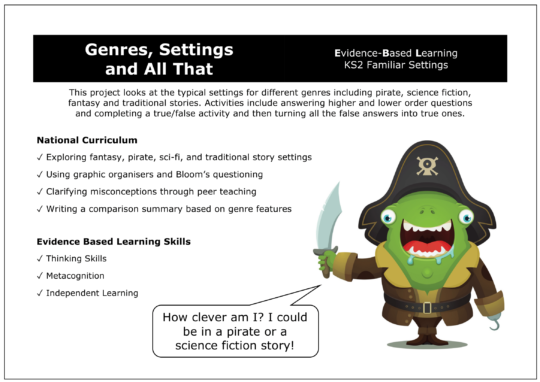
Y5 / Y6 Genres, Settings and All That (project)
£3.00 Add to basket £3.00Add to basket
£3.00Add to basketKS2 National Curriculum:
✓ Exploring fantasy, pirate, sci-fi, and traditional story settings
✓ Using graphic organisers and Bloom’s questioning
✓ Clarifying misconceptions through peer teaching
✓ Writing a comparison summary based on genre featuresThis project looks at the typical settings for different genres including pirate, science fiction, fantasy and traditional stories. Activities include answering higher and lower order questions and completing a true/false activity and then turning all the false answers into true ones.
There is a five-minute evidence-based CPD activity at the end of this lesson which will develop classroom teachers’ skill set. This CPD consists of a research extract on independent learning with a five-minute activity based on this extract.
VIEW -


Y6 Settings across Genres (project)
£3.00 Add to basket £3.00Add to basket
£3.00Add to basketKS2 National Curriculum:
✓ Exploring settings from a writer’s perspective
✓ Reporting on how setting conventions vary across texts
✓ Identifying what makes each genre distinct
✓ Structuring findings into a written reportThis project looks at the settings in a variety of different genres including science fiction, pirate stories, traditional stories and fantasy stories. It also looks at real vs imaginary settings.
There is a five-minute evidence-based CPD activity at the end of this lesson which will develop classroom teachers’ skill set. This CPD consists of a research extract on self-regulation with a five-minute activity based on this extract.
VIEW

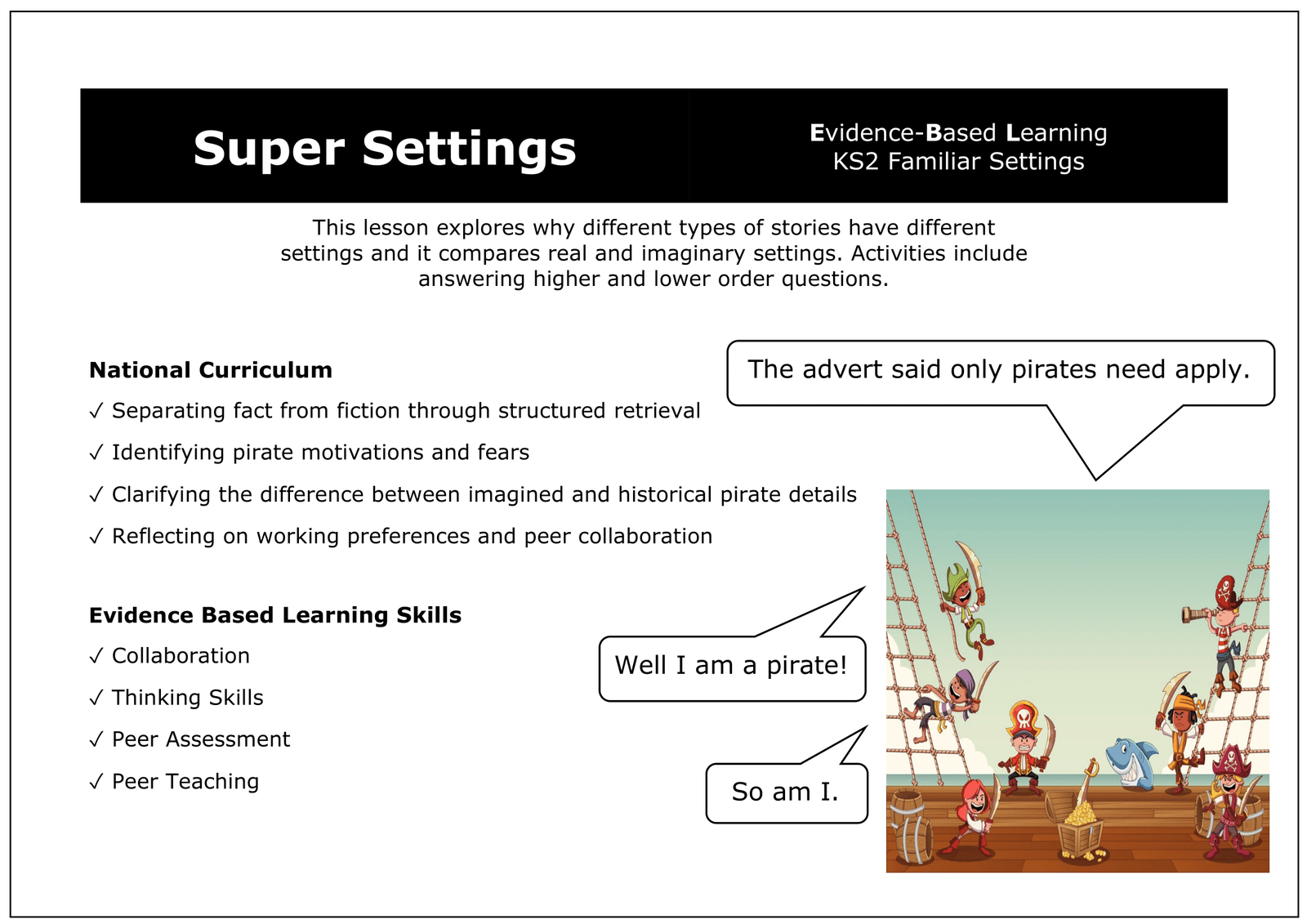
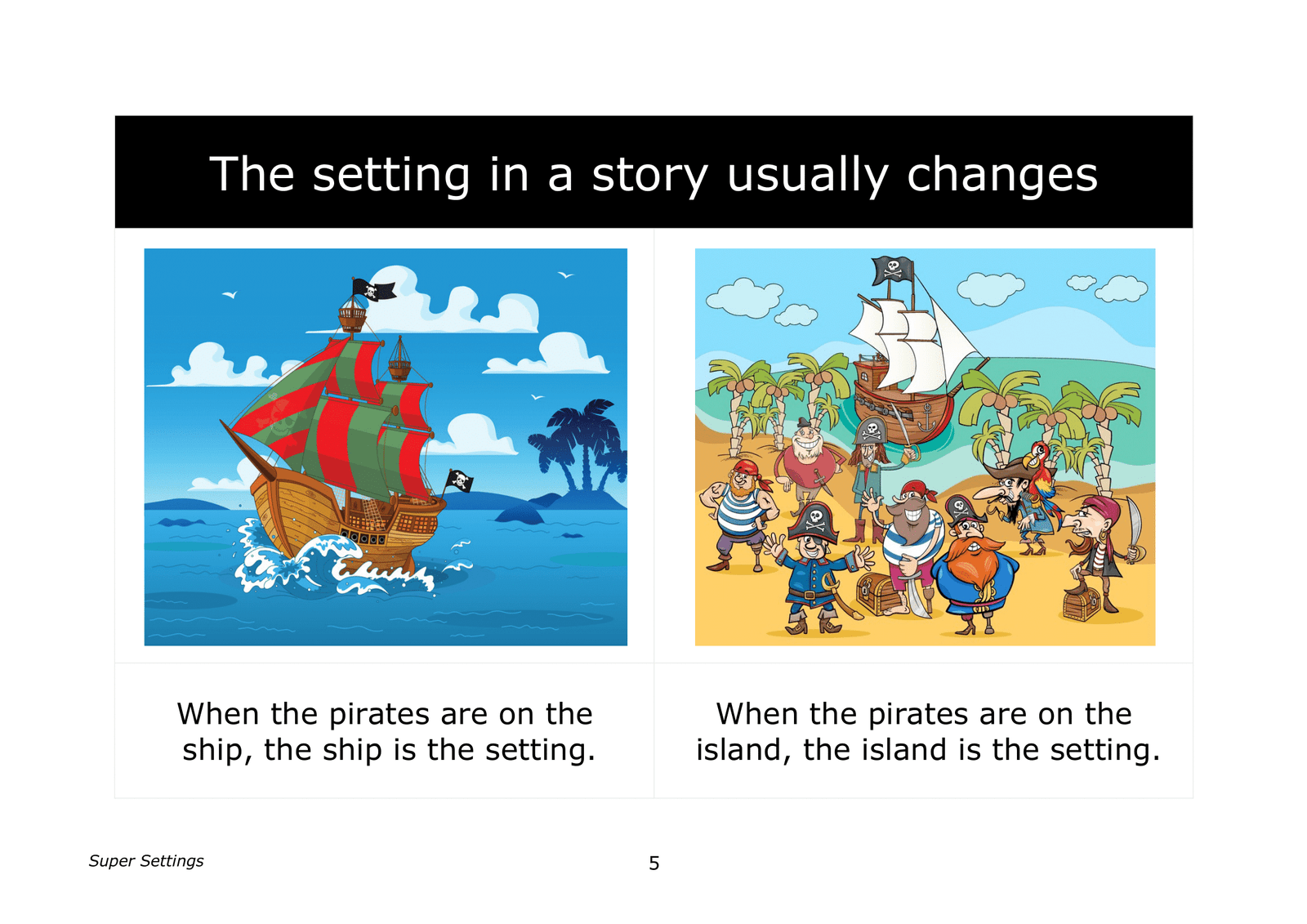
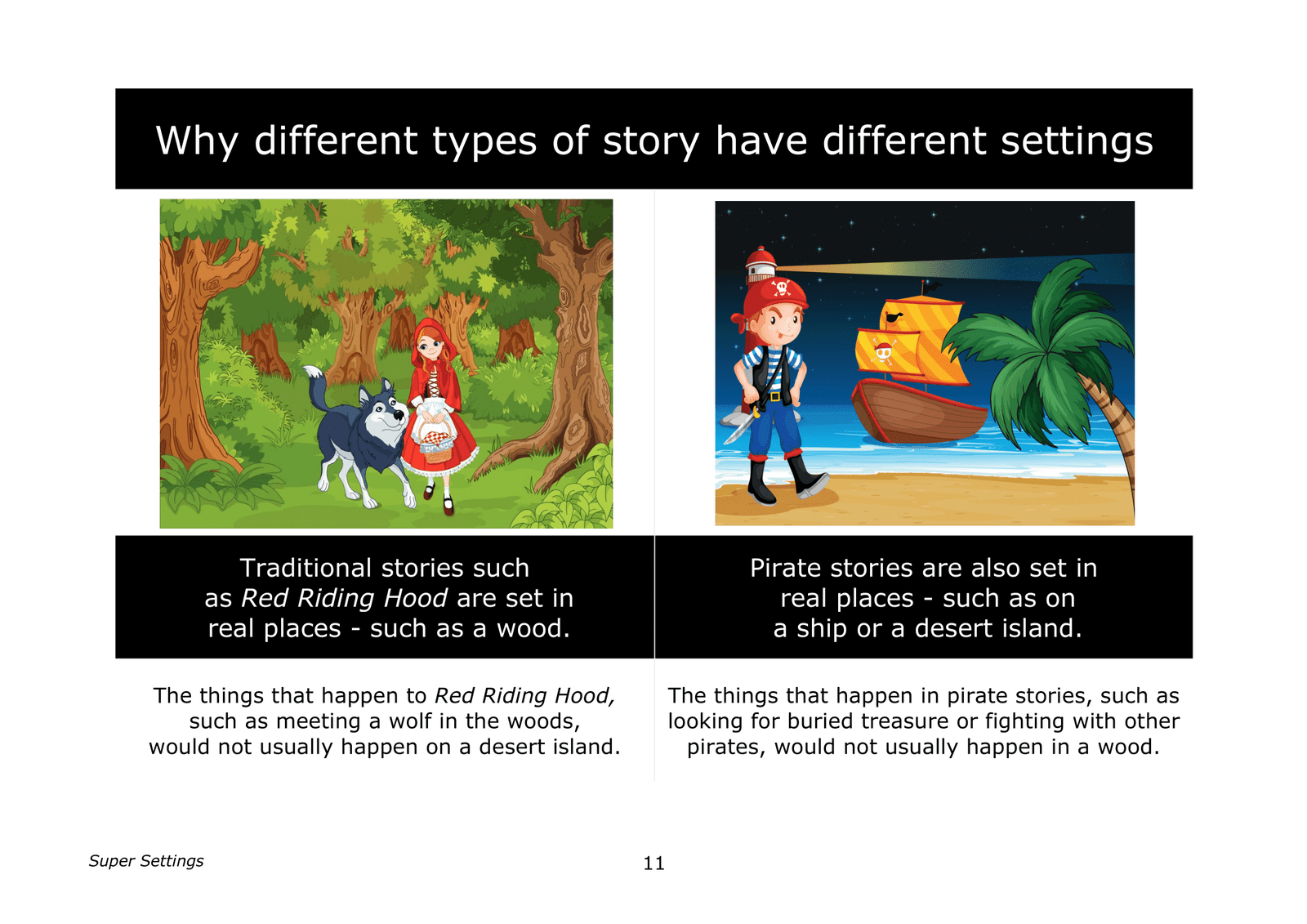
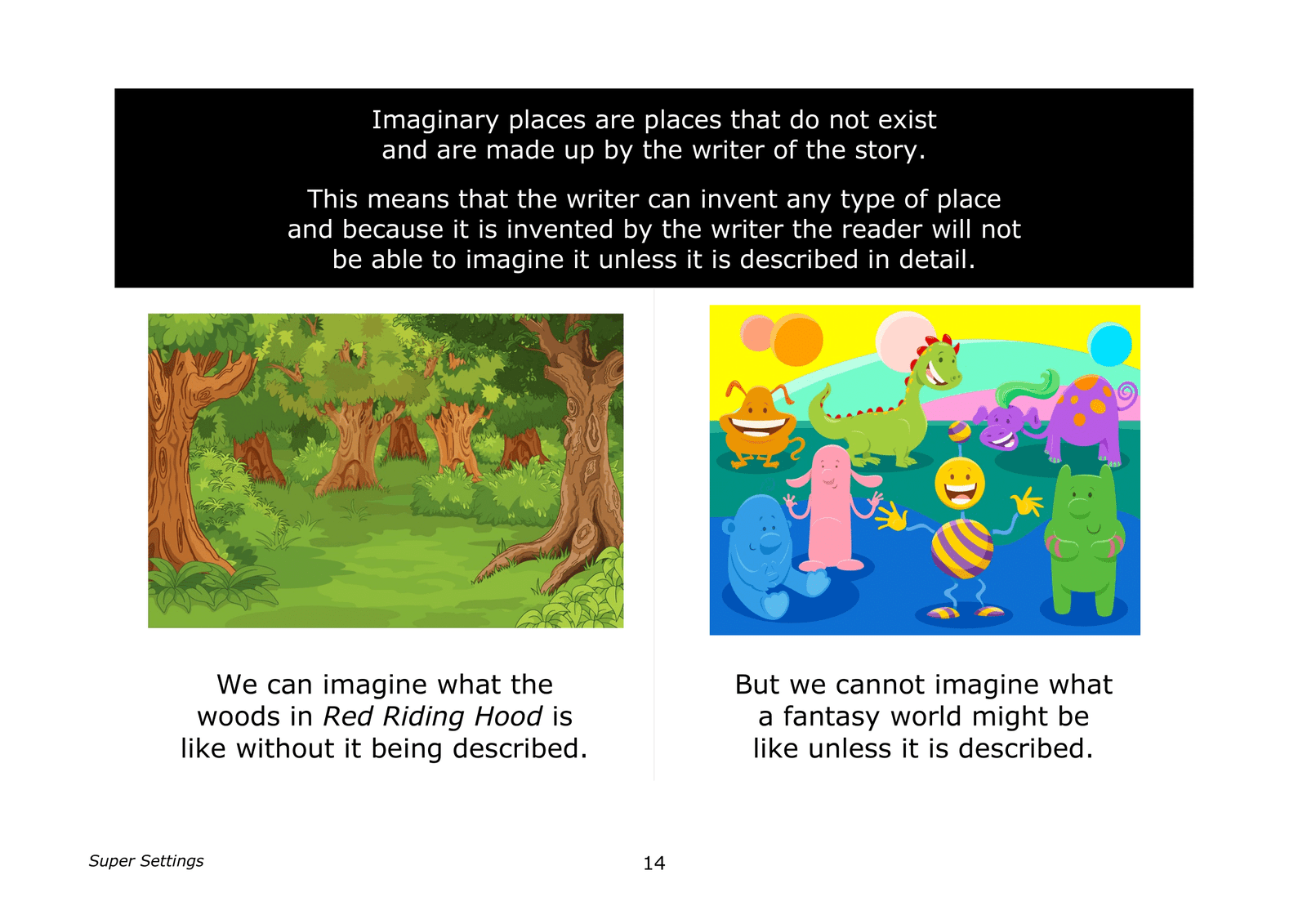
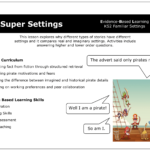
Philipem (verified owner) –
We asked a.i. to review this lesson. This is what it said:
Boost English and Cognitive Skills with the “Super Settings” Lesson
As an upper primary teacher, finding engaging resources that develop both literacy skills and higher-order thinking is a constant challenge. The “Super Settings” lesson from the Familiar Settings unit is a fantastic solution that ticks both of those boxes.
This third lesson in the 11-part unit explores an often overlooked but critical element of stories – the setting. Students analyse why different genres have different typical settings (e.g. pirate stories are set on ships and islands) and how writers approach describing real vs. imaginary settings. The activities get students thinking deeply by having them distinguish real from fantasy settings, describe settings in their own words, and explain their reasoning.
In addition to teaching valuable comprehension and analysis skills around story settings, “Super Settings” also develops four key evidence-based learning (EBL) skills that research has proven maximises learning:
1. Peer teaching – Students reinforce their own understanding by explaining concepts to a partner.
2. Collaboration – Partnering up promotes productive discussions and listening skills.
3. Thinking skills – The questioning activities build higher and lower order thinking capacities.
4. Peer assessment – Evaluating each other’s work helps students learn from different approaches.
As if incorporating all of those EBL skills wasn’t enough, the lesson also includes a 5-minute CPD (continuing professional development) activity for teachers focused on peer teaching. This guides teachers through key research on why peer teaching is effective and has a simple reflective exercise to apply the concepts to your own classroom right away.
With its emphasis on advancing EBL skills while delivering important English content on story settings, the “Super Settings” lesson is a winner for any year 5 or 6 classroom. It’s an engaging, evidence-based way to boost student learning in literacy and cognitive skills simultaneously. Definitely add this one to your instructional arsenal!
I would give the “Super Settings” lesson 5 out of 5 stars for use with year 5 and 6 students.
★ ★ ★ ★ ★
Overall, “Super Settings” is an extremely strong, evidence-based resource for effectively teaching English content while also developing critical thinking/learning skills. The 5-star rating indicates this high-quality lesson is very much worth using in a year 5/6 classroom.